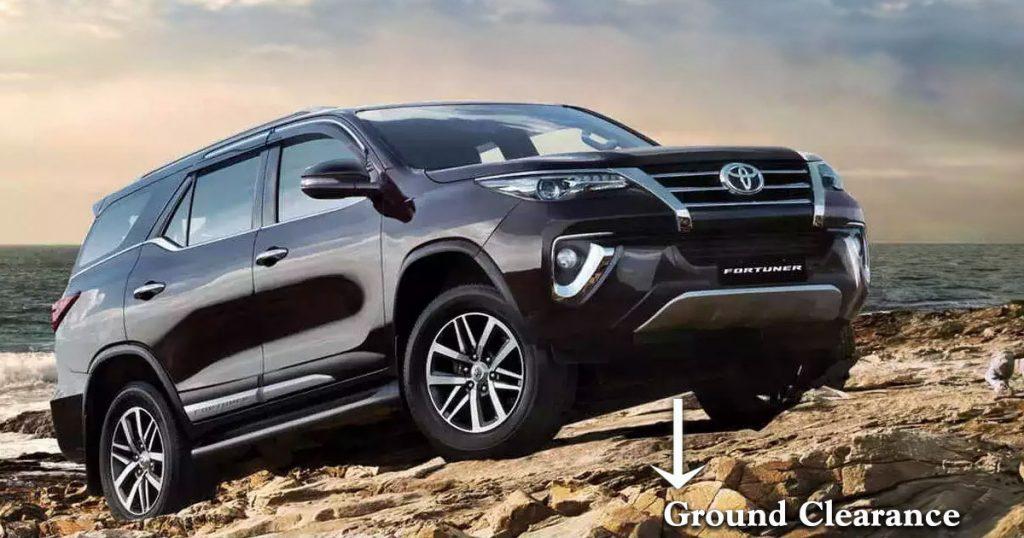Ground clearance is how much space there is between a vehicle’s bottom and the ground. It’s important because it affects how well the vehicle handles rough roads and tough terrain. For off-roading fans, SUVs or crossovers with 7.5 to 9 inches of ground clearance are ideal, as they can handle uneven surfaces better. So, you might consider a high clearance vehicle if you’re feeling adventurous. But if you prefer feeling closer to the road, you might like vehicles with lower ground clearance, like sports cars or sedans, which typically have 5 to 7 inches of ground clearance.
Benefits of Ground Clearance
Having plenty of ground clearance can be really helpful for drivers. It means your vehicle can handle rocky or bumpy roads better. With more clearance, you can use bigger tires, which can give you better grip and stability, especially on slippery roads. Plus, having more space under your car can protect it from getting scraped or damaged by rocks and debris. This helps keep your car in good shape for longer, preventing rust or other problems down the road.
More benefits of ground clearance include:
- Safety Boost: Vehicles with higher ground clearance are less likely to get stuck on obstacles, reducing the risk of accidents.
- Enhanced Off-Road Performance: More ground clearance allows vehicles to navigate rough terrain with ease, making off-roading adventures safer and more enjoyable.
- Weather Resilience: Increased clearance helps vehicles traverse through flooded or snow-covered roads without getting stuck or damaged.
- Better Traction: With greater ground clearance, vehicles can accommodate larger tires, which provide improved traction on various surfaces.
- Reduced Undercarriage Damage: Higher clearance minimizes the risk of scraping or hitting the undercarriage on uneven terrain, preventing costly repairs.
- Improved Comfort: Vehicles with ample ground clearance offer smoother rides, especially on rough roads, by absorbing bumps and shocks more effectively.
- Versatility: Optimal ground clearance makes vehicles suitable for a wide range of driving conditions, from city streets to rugged off-road trails.
Why is Ground Clearance Important?
Many people forget about ground clearance when they’re buying a car, but it’s really important. It determines how well your vehicle can handle different types of roads. Ground clearance affects your car’s performance in a bunch of ways.
Off-Road Adventures
As aforementioned, when a vehicle has more ground clearance, it can do better off-road. This means it can handle rough roads and obstacles like rocks and steep hills without getting damaged underneath.
Snowy Conditions
When it’s snowy, having more ground clearance helps because it keeps your vehicle from getting stuck in the snow. This way, the snow won’t stop you from moving forward.
Flooded Areas
When it’s all wet and flooded, having a car with lots of ground clearance is a lifesaver. It keeps the water out of the engine, which could mess things up pretty badly if it gets in.
High vs. Low Ground Clearance
High ground clearance means there’s more space between the bottom of a vehicle and the ground. This is awesome for off-roading adventures because it helps you get over big bumps and rocks without scratching up the underside of your car. But there’s a trade-off: cars with high ground clearance can feel a bit wobbly, especially when you’re driving fast or making sharp turns.
On the flip side, low ground clearance means there’s less space between the ground and the car. This makes the car feel more stable, especially when you’re zooming along the highway. Plus, low-clearance cars are often better for fuel efficiency because they don’t have to push through as much air. They’re great for zipping around town or cruising on the open road. But watch out for big potholes! They can scrape the bottom of your car if you’re not careful.
Should I get a car with higher ground clearance?
In everyday life, having extra ground clearance is a big plus. It means your car can handle all sorts of bumps and dips without getting hurt underneath. Especially with the rough roads we have in India, every car—whether it’s a small car, a regular car, or a big SUV—should be able to handle giant speed bumps and deep potholes, even when it’s fully loaded. Whether you’re driving in the countryside, up in the hills, or through the city, having the right amount of ground clearance is super important for your car.
How much ground clearance do I need?
Different obstacles on the road come in different sizes:
- Speed bumps are usually between 100mm and 150mm tall.
- Potholes can range from 50mm to 200mm deep.
- Big rocks might be anywhere from 40mm to over 450mm tall.
Since obstacles aren’t all the same size and cars have their own needs, experts say it’s best for a car to have about 170-180mm of ground clearance for most roads. In simple terms, to drive safely and avoid damage, your car should have at least 165mm of ground clearance.
Choosing the Proper Ground Clearance to Ensure Your Vehicle Can Handle Any Obstacle
Want to make sure your car can handle any road? Whether it’s rocky trails, snowy streets, or flooded areas, ground clearance is key. Think about where you drive most and choose a car that matches your needs. So, when you’re picking your next ride, remember: ground clearance matters more than you might think.
